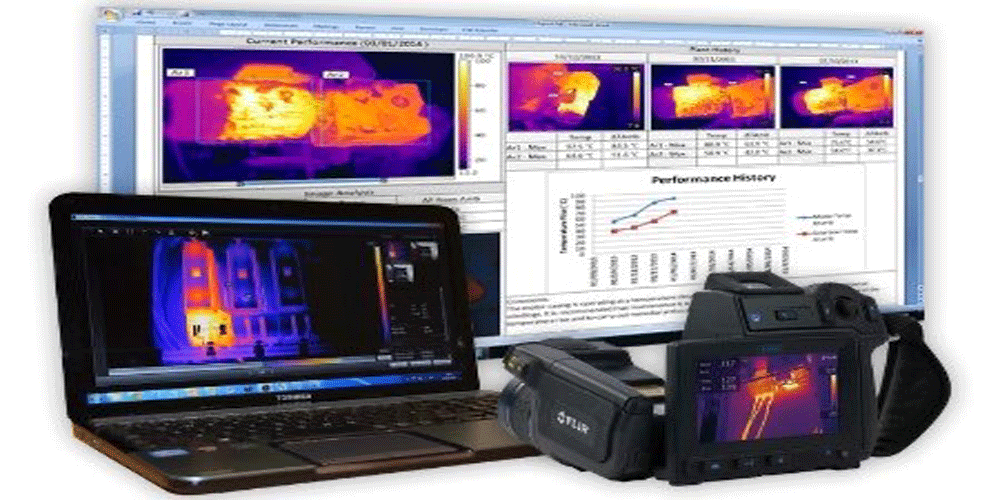Seeing Beyond the Surface: Thermal Imaging Surveys Revolutionizing the Property World
The property world is evolving at a rapid pace, with advancements in technology shaping the way we understand and manage buildings. One such groundbreaking tool making waves in the industry is thermal imaging surveys. Beyond the conventional methods of property assessment, thermal imaging surveys provide a unique perspective by capturing the invisible – heat. In this comprehensive exploration, we will delve into the intricacies of thermal imaging surveys, their applications in the property sector, and the transformative impact they have on decision-making processes.
Understanding Thermal Imaging
Thermal imaging, also known as infrared thermography, is a non-invasive technique that captures the heat emitted by an object or surface. This technology translates thermal energy into visible light, creating a thermogram or thermal image. Unlike traditional property assessments, thermal imaging surveys enable professionals to see beyond visible structures, identifying hidden issues that may not be apparent through conventional means.
Applications in Building Inspections
One of the primary applications of thermal imaging surveys in the property world is building inspections. Traditional methods often rely on visual and manual inspections, which may overlook underlying problems. Thermal imaging, however, can reveal hidden defects, such as water leaks, insulation issues, or electrical faults, by detecting variations in temperature.
- Water Leak Detection: Water damage is a common concern in buildings, and identifying its source can be challenging. Thermal imaging surveys excel in pinpointing water leaks by detecting temperature variations caused by moisture. This early detection not only prevents potential structural damage but also aids in reducing long-term maintenance costs.
- Insulation Assessment: Efficient insulation is crucial for maintaining a comfortable indoor environment and minimizing energy consumption. Thermal imaging surveys assess the effectiveness of insulation by revealing areas with temperature discrepancies. This allows property owners to address insulation issues promptly, leading to improved energy efficiency and cost savings.
- Electrical System Analysis: Overloaded circuits and faulty electrical components pose serious risks in buildings. Thermal imaging surveys can identify overheating electrical elements, indicating potential hazards. By addressing these issues proactively, property owners can enhance safety measures and prevent electrical failures that may result in downtime or even fire hazards.
Energy Efficiency and Sustainability
As the global focus on sustainability intensifies, thermal imaging surveys emerge as a valuable tool for enhancing energy efficiency in buildings. By identifying areas of heat loss or inefficient insulation, property owners can implement targeted improvements, resulting in reduced energy consumption and lower carbon footprints. This aligns with the growing demand for environmentally conscious and sustainable property management practices.
- Energy Audits: Thermal imaging surveys play a pivotal role in energy audits, providing a comprehensive analysis of a building’s thermal performance. This information enables property owners to make informed decisions regarding energy-efficient upgrades, ultimately leading to reduced utility bills and a smaller environmental impact.
- Green Building Certifications: As green building certifications become more prevalent, thermal imaging surveys can contribute to earning and maintaining such certifications. By identifying and addressing energy inefficiencies, properties can meet the stringent criteria set by certification programs, enhancing their market value and appeal to environmentally conscious tenants and buyers.
The Impact on Property Valuation
The insights gained from thermal imaging surveys can significantly impact the valuation of properties. Traditional valuation methods often focus on visible attributes, but thermal imaging adds a layer of information that goes beyond the surface. This comprehensive assessment can influence property prices, financing decisions, and negotiations in the following ways:
- Risk Mitigation: Thermal imaging surveys provide a thorough understanding of a property’s condition, helping to identify potential risks. Property buyers and lenders can use this information to assess the level of risk associated with the investment, potentially influencing property valuations.
- Negotiation Power: Armed with detailed insights from thermal imaging surveys, property owners and buyers have a stronger negotiating position. Sellers can address issues proactively, improving the property’s condition and justifying asking prices. Conversely, buyers can use the survey findings to negotiate lower prices or request necessary repairs.
Future Trends and Innovations
The integration of thermal imaging surveys into the property world is an ongoing process, with continuous advancements shaping the future of this technology. Some notable trends and innovations include:
- Drone-Based Thermal Imaging: Drones equipped with thermal imaging cameras are increasingly used for property inspections. This aerial perspective provides a more comprehensive view of large structures and facilitates faster and more efficient surveys.
- Artificial Intelligence (AI) Analysis: The use of AI algorithms to analyze thermal imaging data is on the rise. Machine learning enables automated detection of anomalies and potential issues, streamlining the survey process and enhancing the accuracy of results.
- Smart Building Integration: Thermal imaging surveys are being integrated into smart building systems, allowing for real-time monitoring and analysis. This proactive approach enables property owners to address issues as they arise, minimizing potential damage and maximizing operational efficiency.
In conclusion, thermal imaging surveys are reshaping the property world by providing invaluable insights that go beyond the visible surface. From detecting hidden defects to enhancing energy efficiency and influencing property valuations, this technology is a game-changer for property professionals.
As the industry continues to embrace innovation, the integration of thermal imaging surveys is likely to become standard practice, ensuring a more sustainable, efficient, and informed approach to property management and decision-making.
